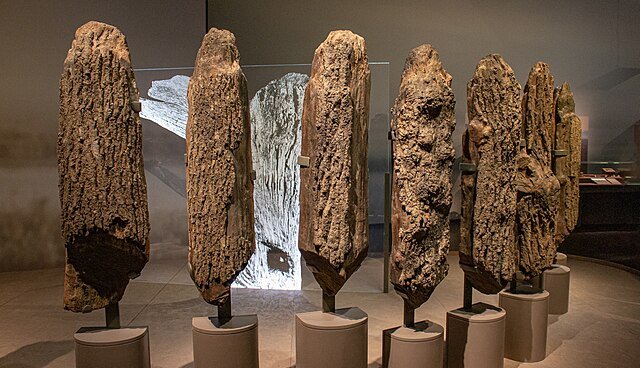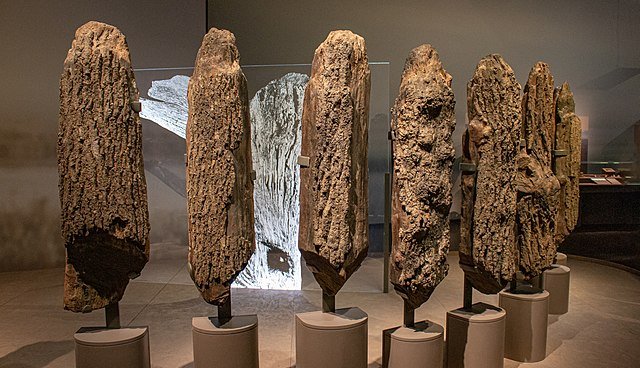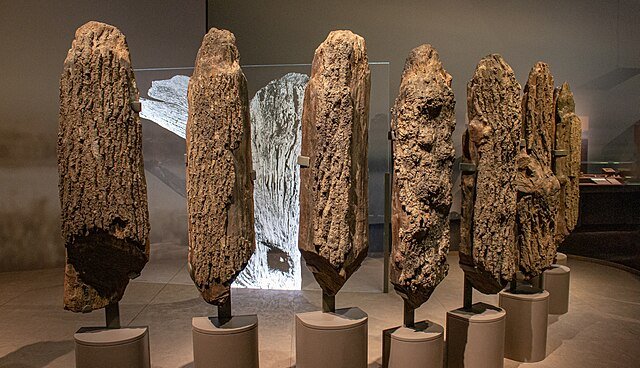Seahenge is a prehistoric timber circle discovered off the coast of Norfolk, England, in 1998. This remarkable structure dates back to 2049 BC, during the early Bronze Age. Also known as Holme I, the site provides a rare glimpse into ancient ritual practices.
Get your dose of History via Email
Discovery and Excavation

Seahenge was uncovered in the sand at Holme-next-the-Sea due to coastal erosion. Archaeologists from Norfolk Archaeological Unit led the excavation to prevent further damage. The circle consists of 55 oak posts, forming an enclosure around an inverted tree stump at the center.
The site’s unique preservation in the waterlogged sands allowed for dendrochronological dating. The dating revealed the timber was felled in the spring of 2049 BC, which corresponds with early Bronze Age Britain.
Structure and Layout

The wooden circle measured around 6.6 meters (22 feet) in diameter. The central tree stump, placed upside-down, may have had symbolic significance. Its roots faced the sky, possibly representing an underworld connection in the religious practices of the time. The surrounding posts were tightly packed, creating a circular enclosure that may have served as a barrier for rituals or ceremonies.
The precise function of Seahenge remains a subject of debate. Some researchers suggest it may have been a burial or funerary monument, while others argue it had ritualistic or ceremonial purposes. The placement of the central stump could signify an offering or sacrifice, but no human remains were found at the site.
Historical Context
Seahenge was built during a time of significant social and technological changes in Britain. The early Bronze Age saw the introduction of metal tools, increased trade, and more complex social structures. Timber circles like Seahenge are rare but not unique. Other timber structures from this period include Stonehenge’s wooden precursor.
The use of oak, a symbolically important tree, and the labor involved in constructing the monument suggest that Seahenge had considerable significance for the people who built it. The craftsmanship and scale of the circle indicate an organized society capable of large-scale construction.
Controversy and Preservation
The excavation and removal of Seahenge caused public controversy. Local residents and some environmental groups argued that the monument should remain in place. They believed its natural degradation should be part of its historical narrative. Archaeologists countered that erosion would soon destroy the site entirely if left untouched.
Ultimately, the decision was made to remove the timbers for conservation. After treatment and analysis, the preserved timbers were displayed at the Lynn Museum in King’s Lynn, Norfolk. Seahenge remains a subject of academic interest, shedding light on Bronze Age practices and beliefs.
Significance and Legacy
Seahenge offers rare insights into Bronze Age Britain. It helps researchers understand the ritualistic and ceremonial life of early communities. The preservation of wood from this period is rare, which makes Seahenge especially valuable for archaeological study.
The site also highlights the importance of coastal archaeology, as rising sea levels and erosion continue to threaten historical sites. Seahenge reminds us of the delicate balance between preserving the past and respecting natural processes.
Conclusion
Seahenge is a unique and significant discovery in British archaeology. Its construction, historical context, and subsequent excavation provide a window into Bronze Age ritual practices. As coastal erosion and climate change continue to uncover and threaten ancient sites, Seahenge serves as a reminder of the importance of archaeological preservation and study.
Source:

